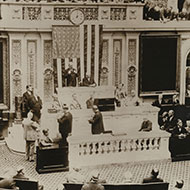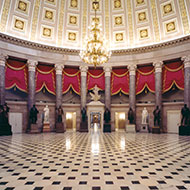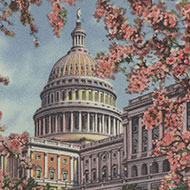Time for a Tour: Visiting the People’s House
If you are planning a trip to the U.S. Capitol and want to know more before you arrive, or if you would like to lead your students on a “virtual” tour of the House of Representatives, take a few minutes to wander through this online exhibit. You will find video tours of historic rooms and spaces, some of which are not open to the public, research resources, and teaching materials that will help bring the U.S. House to your classroom.
- Planning your tour of the Capitol starts with the U.S. Capitol Visitor Center. Visit their website for more information.
Teaching Tip
Design a scavenger hunt for your tour where your students can locate statues, symbols, paintings, and other important items and objects located in the House.
Fast Facts
Learn about the framers’ vision for the newly created governing body and subsequent major developments through essays exploring the institutional powers and duties of the House of Representatives.
More >Teaching Tip
Locate and research the people from your state included in the Statuary Hall Collection. Ask your students to compile of list of possible candidates (and reasons for their choices) if they had the opportunity to nominate a third person for the collection.






